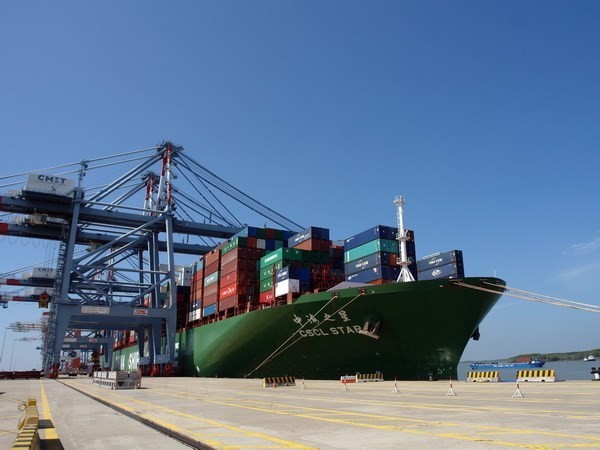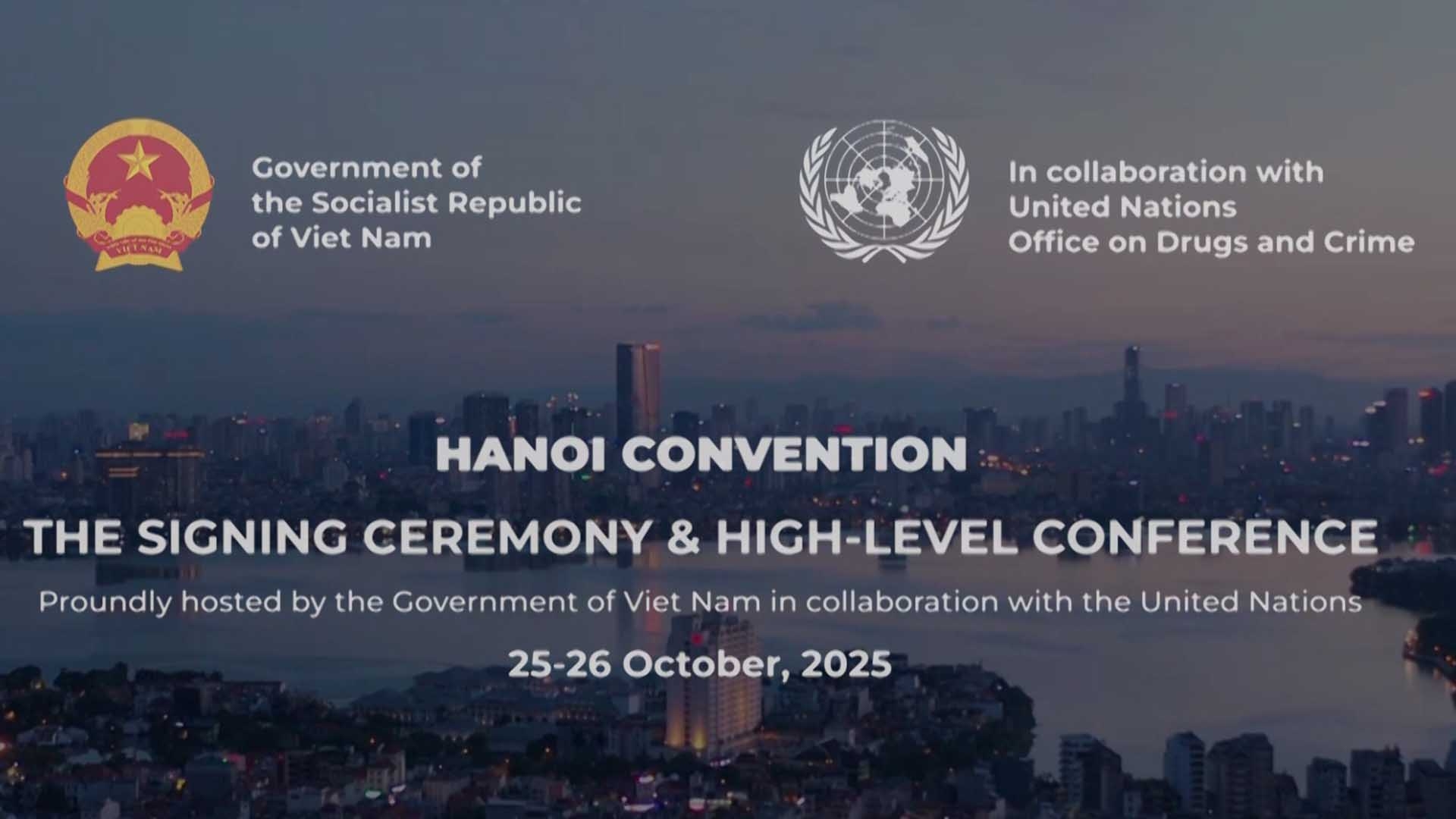
Inter-regional traffic connections driving force for south-eastern region’s growth
Latest
 |
| A large ship docks at Cai Mep International Terminal in Ba Ria-Vung Tau province. (Source: VNA) |
The south-eastern region, including Ho Chi Minh City and the five provinces of Dong Nai, Binh Duong, Ba Ria-Vung Tau, Binh Phuoc, and Tay Ninh, have played a major role in the country’s economic growth.
The region contributes more than 30% of the country’s GDP and 45% of state revenue though it has only 23% of the population.
However, it is facing problems related to traffic infrastructure, which has not been developed, causing high freight costs, affecting businesses.
Under a plan to 2030, the region will have 970km of highways, but now has only 10% of that due to a lack of public investment and land acquisition challenges.
Experts have called for continued efforts to improve the traffic infrastructure and implementation of reforms needed to make the south-eastern region a leading economic engine of the country.
A number of large inter-regional transport projects in the region have begun to be implemented, which are expected to form a complete transport network and synchronous connection among modes of transport.
This also helps improve the efficiency of logistics activities of large economic and industrial zones in the southern key economic region.
Authorities of the localities in the south-eastern region are strengthening comprehensive cooperation in all fields, including speeding up key transport projects to meet development requirements.
Key transport projects being actively implemented
Ring Road No. 3 project, running 90km and costing nearly 75.4 trillion VND (3.2 billion USD), passes through HCM City and the three provinces of Binh Duong, Dong Nai and Long An.
It will have six lanes designed for speeds of 80-100km per hour for commuting and two lanes for emergency stops.
The first phase of the project will stretch 76 km long with four lanes and each locality is in charge of clearing the site and building the section in their territory. It is expected to open to traffic in late 2025 and be fully complete in 2026.
Ring Road No. 3 is a strategic traffic axis, removing traffic bottlenecks, connecting many seaports, reducing travel time and logistics costs, as well as opening up new directions for urban, industrial, commercial, and service development.
Therefore, the four localities are focusing on speeding up the progress of the project to soon complete the construction of the ring road.
The construction of Ring Road No. 3 started on June 18 after HCM City handed over more than 81% of the land needed for the section of the project that crosses the city.
Besides the project’s site requirements being guaranteed, organising bidding to select contractors and consultants has been implemented basically on schedule, according to Luong Minh Phuc, head of the HCM City Management Board for Traffic Works Construction and Investment.
Work on other sections of the road running through Dong Nai, Binh Duong, and Long An also began on June 18, 29 and 30, respectively.
Construction of the Bien Hoa-Vung Tau Expressway project passing through Dong Nai and Ba Ria-Vung Tau provinces also started on June 18.
As a key national expressway project, the project is expected to ease traffic congestion on National Highway No. 51, which is becoming overcrowded and causing more and more serious traffic problems.
It will help facilitate travel between Dong Nai and Ba Ria-Vung Tau provinces and HCM City in the southern key economic zone.
It will run parallel to the National Highway No. 51 and cut through the HCM City-Long Thanh-Dau Giay expressway and Ben Luc-Long Thanh expressway.
The first phase of the project will have a length of 53.7km, including a 34.2km section in Dong Nai, with an estimated investment of nearly 18 trillion VND (755 million USD).
The new expressway will be carried out under three component projects and is scheduled to be completed by 2025 and open to traffic in 2026.
It will have four to six lanes in the first phase and six to eight lanes in the second phase.
In addition, Ba Ria-Vung Tau started work on the Phuoc An bridge project on June 18, and it is expected to be completed in five years.
Spanning over the Thi Vai River, the bridge costs a total of 4.8 trillion VND (205 million USD), with a total length of 4.3km.
Once completed, the bridge will link Phu My town of Ba Ria-Vung Tau with Nhon Trach district in neighbouring Dong Nai province.
Vo Van Minh, Chairman of the Binh Duong Provincial People’s Committee, said the province is focusing on researching and investing in key traffic axes and arteries to create motivation to attract more investment, including sections of Ring Road No.3 and No. 4, and the HCM City-Thu Dau Mot-Chon Thanh Expressway.
The Ring Road No. 4 section in Binh Duong has a length of about 48.3km.
Once fully completed by 2026, the under-construction Long Thanh International Airport project in Dong Nai, together with the existing Tan Son Nhat International Airport in HCM City, will help accelerate development of the south-eastern region.
Besides the seaport systems in HCM City and Ba Ria-Vung Tau, Dong Nai will have new Phuoc An sea port in 2024, which will contribute to enhancing the competitiveness of the logistics sector, and promoting socio-economic development in the southern region.
Strengthening cooperation in transport connectivity
Recently, leaders of HCM City and the provinces of Dong Nai, Binh Duong and Ba Ria-Vung Tau had a meeting to strengthen cooperation in the implementation of inter-provincial transport projects.
Dong Nai and Binh Duong provinces have agreed to build four new bridges connecting the two provinces, namely Hieu Liem 2, Tan An-An Lac, Tan Hien-Thuong Tan and Thạnh Hoi 2.
They also plan to build more roads to enhance connectivity between Binh Duong’s Di An city and Dong Nai’s Bien Hoa city.
Chairman of the HMC City People's Committee Phan Van Mai said the city would discuss with Dong Nai province to propose the Ministry of Transport study and expand the 1A component project of the Ring Road No.3’s Tan Van-Nhon Trach section, which consists of a 1.92km segment in HCM City, and a 6.3km segment spanning across Dong Nai, ensuring synchronous operation of the entire Ring Road No. 3 project.
Leaders of Binh Duong and Tay Ninh provinces have committed to boosting comprehensive cooperation in all fields, focusing on inter-provincial transport projects that enhance regional connectivity.
They have agreed to the planning of two roads and bridges connecting provincial road No. 789 in Tay Ninh and provincial road No. 744 in Binh Duong in the period 2021-2030, with a vision to 2050.
Luong Anh Dung, Deputy Director of Ba Ria-Vung Tau province's Department of Transport, said the province planned to develop a modern, highly connected transport system.
At first it would focus on completing the Bien Hoa-Vung Tau Expressway project by the end of 2025.
Construction of the first phase of Ring Road No. 4 through five southern localities, including HCM City, Binh Duong, Dong Nai, Long An, and Ba Ria-Vung Tau, and generally the Southern Key Economic Region, was expected to start next year and be completed in 2030.
It would begin at the planned Bien Hoa - Vung Tau Expressway in Ba Ria-Vung Tau province’s Phu My town and end at Tan Cang - Hiep Phuoc Port in HCM City’s Nha Be district.























